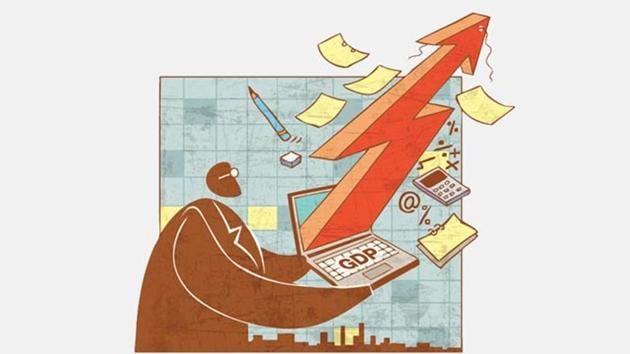Achieving high end of 6.75-7.5% growth difficult: Economic Survey
The government presented a second or a mid-year economic survey for the year 2017-18 highlighting the new factors that the economy faces since the last such exercise in February.
India’s economy may not achieve the upper end of its projected growth of 6.75% to 7.5% this fiscal year, the government said in a mid-year economic survey on Friday.

Disinflationary pressure, agricultural stress, farm loan waiver and introduction of the goods and services tax (GST) are weighing on Asia’s third-largest economy, according to the survey.
“It is (more) unlikely than before that we will achieve the upper end of the growth estimates,” said chief economic adviser Arvind Subramanian.
Growth slowed to 6.1% in the fourth quarter ending March after the government’s shock move in November to recall 500- and 1,000-rupee banknotes wiped out over 80% of the cash in circulation.
But the growth figure for the full year was still higher at 7.1%. The World Bank and the International Monetary Fund, too, projected a growth rate of 7.2% for this year.
“Deflationary tendencies are weighing on an economy yet to gather its full growth momentum and still away from its potential,” Subramanian said.
But the survey said the GST, a stronger rupee, the decision to privatise national carrier Air India, and efforts to address bad debts of banks and companies, have “rekindled optimism” on the pace of structural reforms.
It also predicted that the fiscal deficit would decline from 3.5% of the GDP in 2016-17 to 3.2% in 2017-2018.
However, it warned that several short-term factors such as rising debt of commercial banks and transitionary challenges of GST could hit growth.
“The real challenge is short-term growth … we need to bring all policy support required to revive short-term growth,” Subramanian said.
A sluggish GDP growth could reduce the number of new jobs and hit private investment.
Responding to the government’s report, CPM general secretary Sitaram Yechury tweeted: “From slowdown, India has slid into a contraction = greater unemployment, more misery for the common Indian. The govt has only spin to offer.”
The Congress blamed the government’s demonetisation drive for the negative economic headwinds.
“It vindicates the statement of former prime minister Manmohan Singh that demonetisation will adversely affect the economy, especially the unorganised sector. It will cause structural damage and the negative repercussions will continue,” party spokesperson Sanjay Jha said.
Disinflationary pressures allowed the Reserve Bank of India (RBI) last week to cut its main policy rate by 25 basis points to 6%, the lowest since November 2010. The survey underlined that there was scope for reducing the rates by about 75 basis points.
The RBI warned inflation could accelerate to as high as 4.5%. But government expects the inflation for the full fiscal year would be closer to 3% on the back of a normal monsoon and the deflationary impact of farm loan waivers.
Uttar Pradesh and three other states have agreed to write off farm loans of farmers struggling to cope with losses caused by bad weather.
Subramanian said the loan waivers were likely to be deflationary as the states would have to either raise taxes or cut spending to keep their budget deficits in check.
Industry leaders called the survey a “correct assessment” of India’s economy.
“The economic survey has rightly described the current economic outlook as a combination of optimism and anxiety,” said Chandrajit Banerjee, the director general of the Confederation of Indian Industry.
(with agency inputs)





